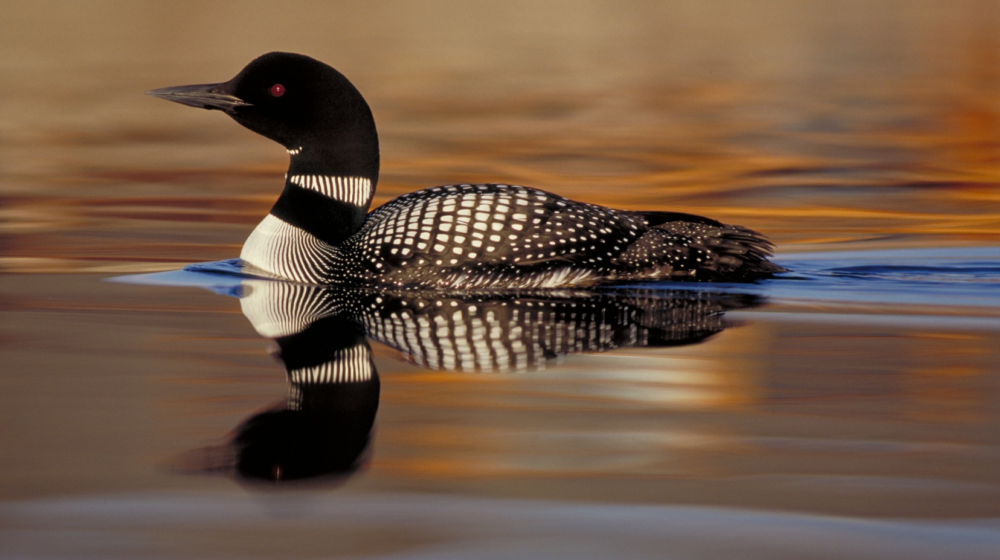Gavia immer

On northern lakes and rivers, the Common Loon stands as a symbol of the wilderness. Its haunting,
echoing calls, and striking appearance, have captured the imaginations of people for generations.
Habitat
Look for Common Loons on northern lakes in summer that are clear and deep, with plenty of small fish. Winter takes them mainly to ocean coasts along Canada, the United States, and Mexico, although some will spend the winter on large inland lakes and rivers.
Food
Common Loons eat mainly fish. If fish are scarce, they will also eat crustaceans like crayfish, snails,
leeches, and aquatic insects.
Behaviour
Loons will pair together for up to five years. While the male chooses the nest site in a sheltered place at the lakeshore, both will build the nest. After 1 to 2 eggs are laid, they will incubate for about 27 days. Soon after hatching, the young can swim and will often be seen hitching a ride on the parent’s back.
Feeding during the day, they will dive and deftly pursue fish underwater. Sometimes during the day, but mostly at night, they will call with their distinctive yodels. Different sounds are made, depending if they are swimming or flying. While their summer colours and calls are well-known in the north, they change to a drab grey overall for winter and don’t call at all in the south.
Conservation
Overall, Common Loon populations are stable. However, local populations are affected by water pollution, poisoning from lead fishing gear, getting caught in commercial fish nets, and shoreline disturbance from motorboats.

